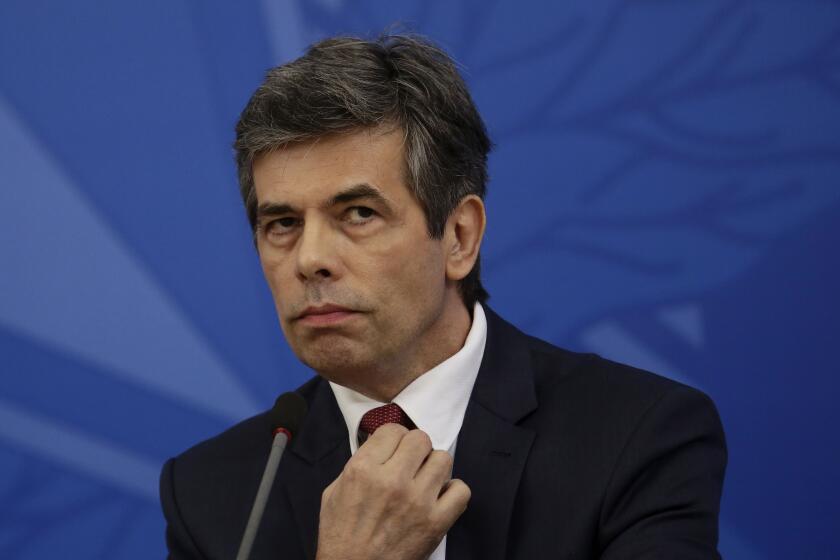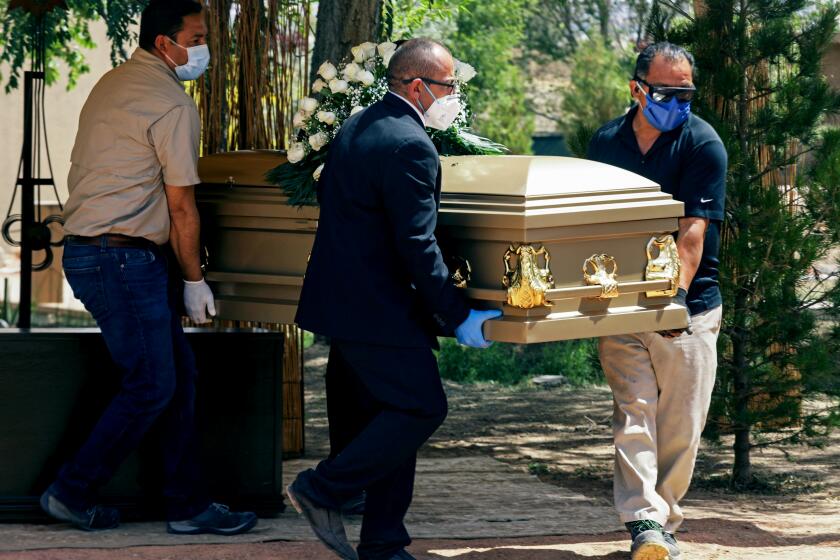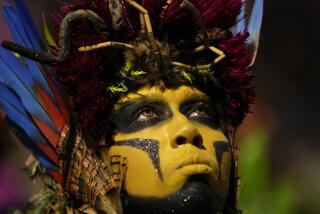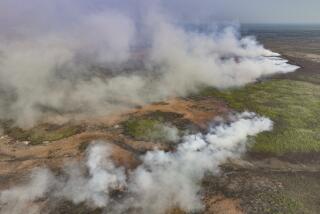Coronavirus spreads to Brazil’s rainforest areas, infecting Amazonian native communities
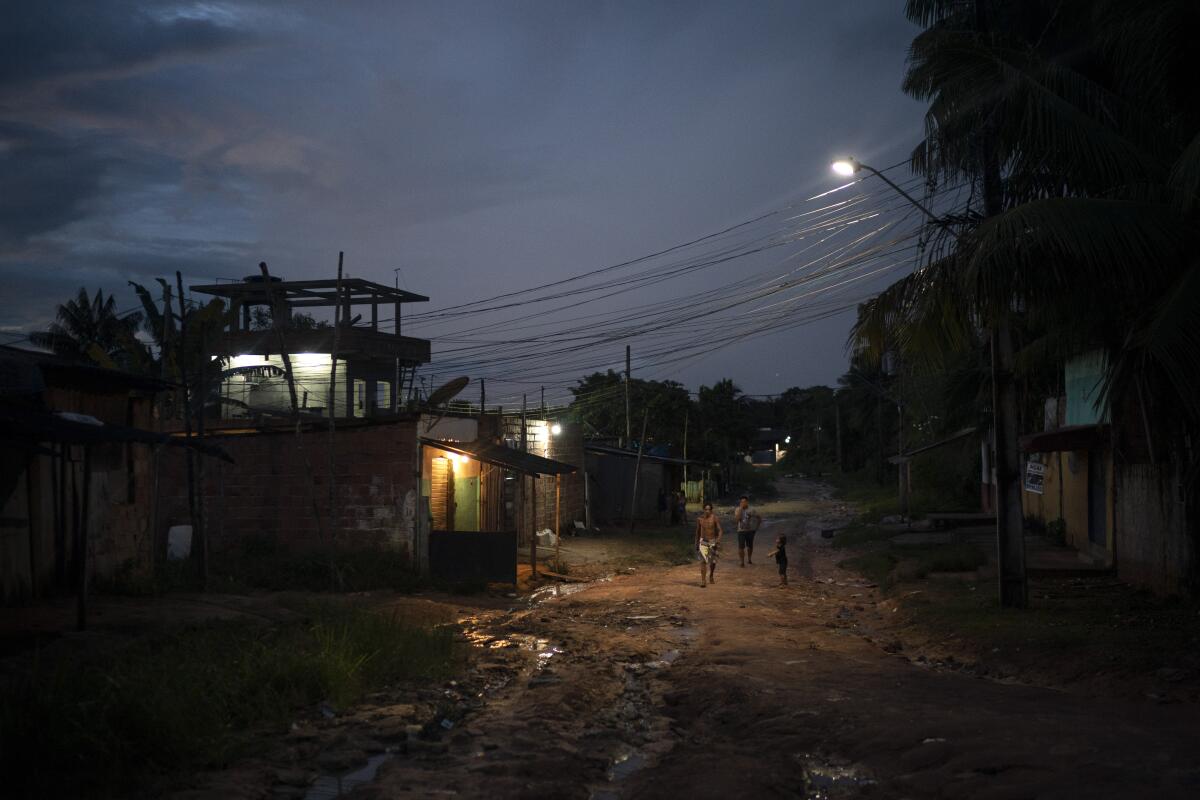
MANAUS, Brazil — In the remote Amazon community of Betania, Tikuna tribe members suspect the coronavirus arrived this month after some returned from a two-hour boat trip down the Solimoes River to pick up their government benefit payments.
Dozens of tribe members subsequently developed headaches, fevers and coughs. Two died. The five government medical workers for the community of about 4,000 are not treating the sick because they lack protective equipment and coronavirus tests, said Sinesio Tikuna, a village leader.
So the Tikuna rely on their traditional remedy for respiratory ailments: inhaling clouds of smoke from burning medicinal plants and beehives.
The Tikuna’s plight illustrates the danger from the coronavirus as it spreads to rainforest areas where tribe members live in close quarters with limited medical services. Most are reachable only by boat or small aircraft.
“We’re very worried, mainly because help isn’t arriving,” Sinesio Tikuna said in a telephone interview.
Brazil has Latin America’s highest COVID-19 death toll, with more than 16,700 as of Monday. The country’s hardest-hit major city per capita is in the Amazon — Manaus, where mass graves are filling up with bodies.
Brazil’s health minister has resigned after less than a month in office in a sign of continuing upheaval in the nation’s battle with the coronavirus.
As Sinesio Tikuna described his belief that beehive smoke saved four sick tribe members, there was no one at a Manaus hospital to help a feverish woman, who was struggling to breathe, to make it inside the emergency room. A police officer put her on a gurney, wheeling it inside with an Associated Press photographer’s help.
The indigenous people dwelling up the Solimoes and Negro rivers that merge in Manaus to form the Amazon River tried for weeks to seal their reserves off from the virus, pleading for donations while awaiting government deliveries of food so they could remain isolated. It didn’t come for many, indigenous advocates said.
The Upper Solimoes basin has 44 tribal reserves and has emerged as the Brazilian Amazon’s indigenous infection hot spot. Testing is extremely limited but shows that at least 162 of the area’s approximately 76,000 indigenous people have been infected and 11 have died. There are more than 2,000 confirmed infections in parts of the area not overseen by the government’s indigenous healthcare provider.
In a Tikuna village named Umariacu near the border with Peru and Colombia, the first three COVID-19 deaths were elderly tribe members infected by younger members who left town to receive government welfare payments and trade fish and produce for chicken and other food, said Weydson Pereira, the healthcare coordinator for the region’s indigenous government.
“Our biggest anguish today is the indigenous people who aren’t staying in their communities and coming in and out of town. Today the safest place for them is inside their villages,” Pereira said this month. He himself is infected and isolating at home with his infected wife and daughter.
Two weeks of tribal quarantine for the region would have provided time to identify and isolate cases, but “unfortunately, that hasn’t happened,” he said.
In cities across Mexico, morgues are full and funeral homes are jammed but nobody knows for sure how many people have died in the COVID-19 pandemic.
In the same area, people of Kokama ethnicity have been unable to get medical treatment in the small city of Tabatinga or from the government’s indigenous care provider, federal prosecutors said in a lawsuit filed this week seeking to expand Tabatinga’s hospital.
That hospital’s 10 ventilators are in use for coronavirus patients, and the nearest intensive care is 1,000 miles downriver in Manaus, which is also filled with patients, Pereira said.
Manaus’ lack of coronavirus treatment prompted Pedro dos Santos, the leader of a slum named Park of Indigenous Nations, to drink tea made of chicory root, garlic and lime to combat a high fever that lasted 10 days. A 62-year-old neighbor of Bare indigenous ethnicity needed an ICU bed, but none were available and he died, said the man’s son, Josué Paulino.
Some frightened residents of Manaus, population 2.2 million, are fleeing. But they may be asymptomatic carriers and could spread the virus elsewhere, said Miguel Lago, executive director of Brazil’s Institute for Health Policy Studies, which advises public health officials.
Worldwide, the pandemic has left indigenous peoples at risk because so many have poorer health and less access to healthcare than non-indigenous peers.
About 575 miles up the Negro River from Manaus is the community of Sao Gabriel da Cachoeira, where people of 23 indigenous ethnicities make up more than 75% of the population.
About 46,000 live in the urban area and on rural reserves with frequent back-and-forth transit, said Juliana Radler, an advisor to the Socio-Environmental Institute, an environmental and indigenous advocacy group.
Sao Gabriel da Cachoeira quickly reacted to the COVID-19 threat within a week of the World Health Organization’s pandemic declaration by cutting off riverboat and plane arrivals in late March, except for essential goods and soldiers.
But Radler said some Sao Gabriel da Cachoeira residents stuck in Manaus headed home on supply ships, disembarking nearby and sneaking into town under cover of darkness. About 150 others made the voyage on a triple-decker ferry named the Lady Luiza.
When it arrived days later, authorities tried but failed to turn passengers away. No quarantine areas were available, and some ferry passengers may have brought the virus to Sao Gabriel da Cachoeira, Radler said.
Breaking News
Get breaking news, investigations, analysis and more signature journalism from the Los Angeles Times in your inbox.
You may occasionally receive promotional content from the Los Angeles Times.
Brazil’s navy authorized the ferry’s trip and passengers were desperate to go home because “they felt exposed and vulnerable” in Manaus, the Lady Luiza’s owner said on Facebook.
By mid-April, many residents had what they believed was a strong flu. The community’s COVID-19 committee used radio broadcasts, sound trucks and pamphlets to issue warnings about the virus in Portuguese and indigenous languages, including Tukano, Nheengatu and Baniwa.
One of the first confirmed coronavirus cases was that of a teacher of Baniwa ethnicity who died after being taken to Manaus for treatment.
As of this week, Sao Gabriel da Cachoeira had 292 confirmed infections, and nearby indigenous reserves had registered their first cases.
All six functioning ventilators in the hospital were in use, and remote tribal health centers were short of supplies, Radler said.
“We need a field hospital as fast as possible, in the next 20 days,” she said. “If not, it will be a catastrophe, a true catastrophe.”
More to Read
Sign up for Essential California
The most important California stories and recommendations in your inbox every morning.
You may occasionally receive promotional content from the Los Angeles Times.
